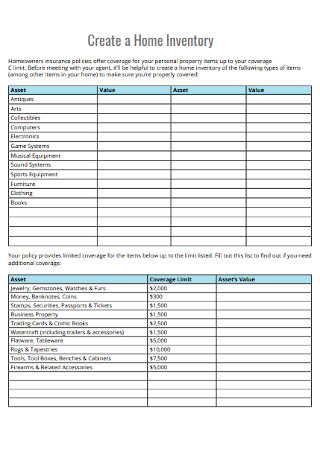
Once you have completed your home inventory, set a calendar reminder to update it quarterly or whenever you make a major purchase, such as a new TV or refrigerator.

Consider storing electronic copies of these documents on an external storage device (portable hard drive or thumb drive) or cloud service so you have one go-to location following a loss. You also may want to keep a copy with your other important financial information (home insurance policy, mortgage documents, bank information, etc.). Store a copy of your inventory in a safe place outside of your home (in the “cloud,” in a safe deposit box, etc.). If you have receipts for the items, keep copies with your inventory documentation.
#Inventory insurance serial number
Whatever method you choose, go room by room, taking note of each item’s value, serial number (if applicable), unique design details and date of purchase. These resources may provide useful checklists to ensure you do not miss anything and may even allow you to store a copy of your information in the digital “cloud” so you can access the information even if your computer or phone is lost or damaged.

Online inventory templates or smartphone apps are available to document your belongings.

A complete inventory can help you identify items that may be difficult to document after damage, especially smaller items, and can serve as a starting place when you report a claim.Ĭomplete a video inventory by walking through your home or apartment and narrating the items in each room.Ĭreate a photo inventory by taking photographs of your items, including serial numbers, and creating an album of your home’s contents. A home inventory can help you ensure that you have adequate insurance in the event of catastrophe and can help you verify your losses.Ī home inventory is a complete record of your belongings, including their purchase date and approximate value.


 0 kommentar(er)
0 kommentar(er)
